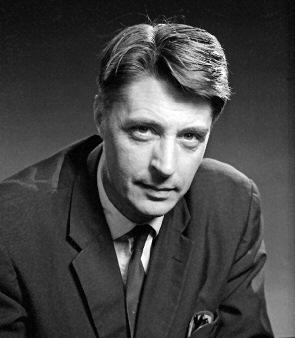Top Qs
Timeline
Chat
Perspective
Torkel Weis-Fogh
Danish insect flight expert (1922–1975) From Wikipedia, the free encyclopedia
Remove ads
Torkel Weis-Fogh (25 March 1922 – 13 November 1975) was a Danish zoologist and Professor at the University of Cambridge and the University of Copenhagen.[1][7][8][9][10][11] He is best known for his contributions to the understanding of insect flight, especially the clap and fling mechanism used by very small insects. James Lighthill named this "the Weis-Fogh mechanism of lift generation".[12][13]
Remove ads
Education
Weis-Fogh was born in Aarhus and educated at University of Copenhagen.
Research and career
Summarize
Perspective
Weis-Fogh was research assistant to the Danish Nobel Prize–winning physiologist August Krogh, where he studied the flight mechanism of the desert locust.[14][15][16]
He pioneered studies of insect flight with Krogh in a classic paper of 1951.[17] He then spent a year at the Copenhagen Institute of Neurophysiology.[12]
Weis-Fogh then went to the University of Cambridge in England for four years, where he discovered a rubbery protein, resilin, in insect cuticle.[12][18] He continued working on insect flight.[19][20][21][22][23]
He returned to Copenhagen as Professor of Zoophysiology, but went back to Cambridge in 1966 to become Professor of Zoology there, continuing to investigate mechanisms of cell motility and of flight.[12][24][25][26][27][28]
Insect flight

In 1973 Weis-Fogh devised a mathematical model explaining how extremely small insects such as thrips and chalcid wasps such as Encarsia formosa could fly using clap-and-fling,[29][30] where conventional steady state aerodynamics did not apply. These insects gain lift by creating vortices near their wings, at the price of the wear and tear from repeated clapping. The British mathematician Sir James Lighthill named this the Weis-Fogh mechanism of lift generation.[12][13] Weis-Fogh's 1973 paper Quick Estimates of Flight Fitness in Hovering Animals, Including Novel Mechanisms for Lift Production[29] has been cited over 1000 times.[31]
Remove ads
Awards and honours
The Hanne and Torkel Weis-Fogh fund is named in his honour.[32]
References
Wikiwand - on
Seamless Wikipedia browsing. On steroids.
Remove ads

